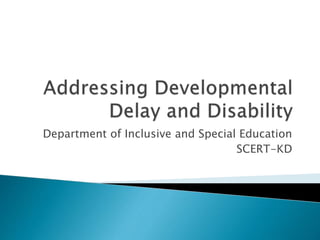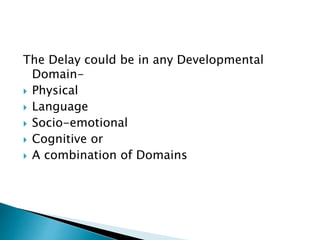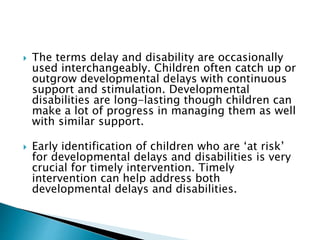The document discusses the importance of inclusive education and the need to identify and support specially-abled students, focusing on early childhood development and intervention strategies for developmental delays and disabilities. It outlines steps teachers can take to monitor children's progress, engage families, and collaborate with medical professionals for timely interventions. The document emphasizes the role of teachers in creating an inclusive classroom environment and providing appropriate strategies to facilitate learning for all students.






















![Addressing_Developmental_Delay_and_Disability[1].pptx](https://image.slidesharecdn.com/addressingdevelopmentaldelayanddisability1-230901151303-ace79cfb/85/Addressing_Developmental_Delay_and_Disability-1-pptx-23-320.jpg)
![Addressing_Developmental_Delay_and_Disability[1].pptx](https://image.slidesharecdn.com/addressingdevelopmentaldelayanddisability1-230901151303-ace79cfb/85/Addressing_Developmental_Delay_and_Disability-1-pptx-24-320.jpg)